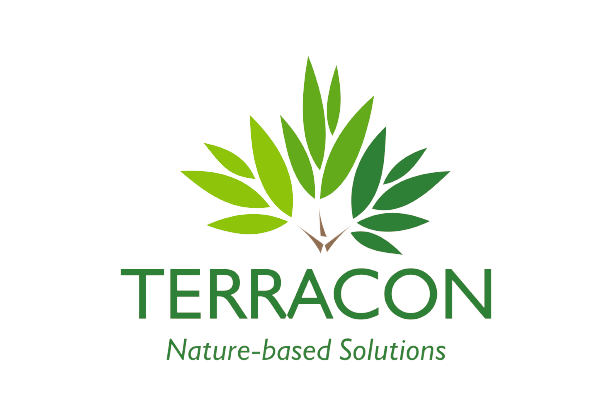
The industrial sector is a substantial contributor to global greenhouse gas emissions, with industrial zones alone accounting for 20%. Yet, there is a solution, but it has not been taken seriously by the industry. Greenbelts are rows of systematic plantations to create buffer zones to trap pollution near the source and avoid dispersion of these beyond the industrial area. These green spaces not only serve as natural buffers against air pollution but also play a crucial role in mitigating temperature rise and improving the quality of life for employees and local communities. Learn how industries can mitigate the air pollution just by planting trees.
When companies fail to select the right tree species or overlook the harsh conditions of industrial zones, the intended benefits of greenbelts—such as air purification and temperature regulation—are significantly diminished. Instead of thriving, poorly chosen plants struggle to grow, leaving pollutants in the air and temperatures unchecked. This creates a ripple effect, where both the environment and employee health suffer due to ineffective pollution control.
Each industrial sector faces distinct environmental challenges, driven by the specific nature of their operations and processes. Addressing these sector-specific issues is crucial for developing effective pollution management strategies and ensuring that environmental impacts are minimized.

Industrial areas are typically divided into several distinct zones, each designed to accommodate different types of industrial activities and manage their environmental impacts. Various areas contribute to air pollution, with each zone producing distinct pollutants based on its operations. Energy production zones, especially those reliant on combustion processes, release large amounts of particulate matter, sulfur oxides, nitrogen oxides, and carbon dioxide during fuel combustion and waste disposal. Without comprehensive greenbelts to mitigate these emissions, pollutants spread unchecked, severely impacting air quality and public health. In manufacturing zones, fugitive emissions, chemical reactions, and fossil fuel by-products lead to significant air pollution and health risks for employees and nearby communities.
Buffer zones are typically established around the periphery of industrial zones to create a protective barrier between industrial operations and surrounding communities. However, when these buffer zones are poorly planned, they fail to prevent harmful pollutants from reaching residential areas. For example, industries like Waste Management Inc. emit large quantities of methane and volatile organic compounds, with their landfills contributing significantly to air pollution. Additionally, common practices like open burning of waste release hazardous pollutants, such as dioxins and furans, that degrade air quality. The absence of effective greenbelts and inadequate waste management in these peripheral zones exacerbates pollution, leading to negative impacts on both the environment and public health.
Furthermore, industries operate in distinct environmental zones, where the effects of temperature, climate, and heatwaves vary significantly, and their interaction with these factors differs based on sector-specific industrial processes and activities.
Higher temperatures and climate changes can accelerate the emission of pollutants and exacerbate pollution problems. For example, elevated temperatures can enhance the formation of ground-level ozone and increase the rate of chemical reactions that produce hazardous gasses. Heatwaves can further intensify these effects by straining cooling systems and increasing the concentration of pollutants in the air. Similarly, in industrial zones, warmer climates and extreme heat can worsen issues such as dust generation, soil erosion, and heat stress among workers, impacting both operational efficiency and health outcomes.
However, it is crucial that these initiatives are planned and executed in a thoughtful and strategic manner.
This includes selecting the right tree species, considering the local climate and industrial conditions, and ensuring proper maintenance and monitoring of the greenbelts. By doing so, green belt development can become an effective tool in reducing air pollution and promoting a healthier environment for both workers and surrounding communities.
Despite efforts by companies to plant trees and establish green spaces, their effectiveness is often compromised by inadequate species selection. Governments advise industries to carefully select plant species that are well-suited to the specific environmental conditions of their industrial zones. For example, guidelines from the Ministry of Environment in India highlight the importance of choosing the right species by considering factors such as local soil composition, climate, and pollution levels. The Ministry emphasizes that this tailored approach is crucial for achieving benefits like air filtration and temperature regulation. Without careful species selection, greenbelt initiatives may not fully deliver their intended ecological and air quality improvements, leading to less effective pollution control.

Different tree species offer distinct environmental benefits due to their unique physiological characteristics. The Peepal tree (Ficus religiosa) is notable for its rapid growth and high air purification capacity, efficiently absorbing pollutants like CO₂ and particulate matter (PM2.5) due to its broad leaves and extensive root system. In contrast, the Mango tree (Mangifera indica) is more effective at providing shade and reducing the heat island effect in industrial areas, thanks to its large canopy and dense foliage, although it offers some air purification benefits. Neem trees (Azadirachta indica) thrive in arid conditions, contributing to dust control and soil stabilization while their natural pesticide properties reduce the need for chemical treatments. The Eucalyptus tree (Eucalyptus spp.) grows quickly and absorbs large amounts of water, helping manage runoff and soil erosion; however, it can be invasive and might not be suitable for all environments.

Case Study: Coastal Energen’s Greenbelt Development in Tuticorin by Terracon Ecotech
In early 2010, Terracon Ecotech, in collaboration with Coastal Energen Pvt. Ltd., initiated a greenbelt development project in Tuticorin to mitigate the environmental impacts of industrial activities. The goal was to improve air quality and enhance biodiversity around the industrial site through strategic greenbelt planning.
Challenges and Innovative Solutions
Due to space constraints around the site, the requirement of 1,000 trees per hectare as stipulated by the Ministry of Environment and Forest (MoEF) posed significant challenges. However, through our research, we devised a more practical and cost-effective solution—planting 400 trees per hectare. This customized design, which was still in line with environmental goals, was accepted by the MoEF.
By suggesting this reduced density of trees, we not only addressed the spatial limitations but also helped Coastal Energen save significantly on costs, if one tree costs ₹50, planting 1,000 trees would have cost ₹5,000 per hectare. With our revised plan of 400 trees, the cost was reduced to ₹2,000 per hectare, saving 60% on costs, and offering both environmental and financial benefits.
Why This Approach Worked
While we could have pushed to meet the government’s original requirement, doing so in the limited available space would have come with its own challenges, including potential negative consequences on the health of the trees due to overcrowding. Instead, our approach prioritized sustainability and effectiveness, ensuring the trees had enough room to grow while still meeting environmental objectives.

Results and Impact
With the revised greenbelt design, the project not only complied with the Ministry’s guidelines but also demonstrated improved air quality and biodiversity around the industrial site. The use of appropriate plant species, zoning strategies, and an efficient drip irrigation system contributed to the long-term success of the greenbelt.
This case study highlights how tailored greenbelt strategies can deliver both environmental and economic benefits, making it a win-win for businesses and the environment.
Conclusion
In conclusion, the integration of greenbelts within industrial zones presents a transformative opportunity to address the significant environmental challenges posed by industrial activities. By strategically selecting suitable tree species and implementing tailored greenbelt designs, industries can effectively combat air pollution, enhance biodiversity, and improve the overall quality of life in surrounding communities.
The successful case study of Coastal Energen exemplifies the potential of innovative greenbelt strategies to balance environmental goals with practical considerations, such as space and cost management. Such approaches not only comply with regulatory guidelines but also demonstrate the viability of sustainable practices in industry settings.
Moreover, it is essential for industries to prioritize ongoing maintenance and monitoring of these greenbelts to ensure their long-term success. As we move forward, fostering collaboration between businesses, environmental agencies, and communities will be crucial for realizing the full potential of greenbelts as a solution for sustainable industrial operations.
Ultimately, the shift towards greener industrial zones can significantly diminish greenhouse gas emissions and foster a healthier environment, paving the way for a more sustainable future.
Want to transform your industrial environment? Book a demo or speak with our experts today!

Written by
Anjeeta Goud
Team- Business development and Strategy
Terracon Ecotech
Reference :
Green Design and Planning Resolutions
What are Industrial Green Belt, and Why are they Needed?
Greenbelts are an effective mode of control of air pollution
Greenery Development In Industrial Areas
Which Plant where? Species Selection
Screening of Plant Species Response and Performance for Green Belt




